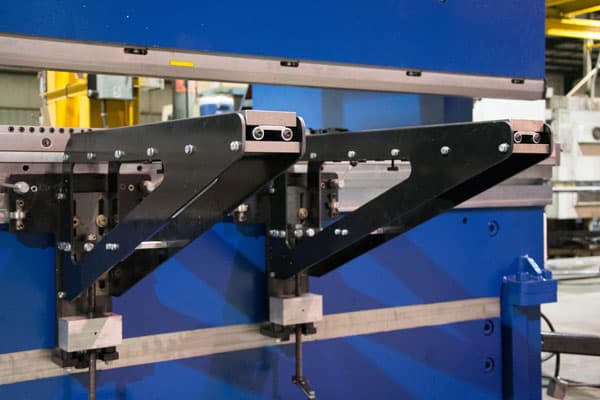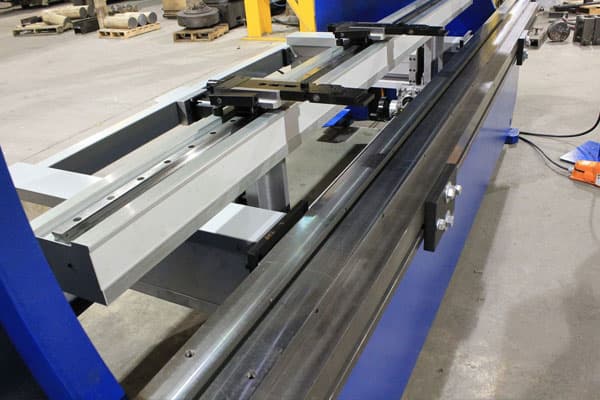Our Servo Hydraulic Press brakes are efficient and powerful metal benders. They consume up to 66% less power during standby and use 44% less energy during the bending process. Our servo brakes are powered by AC Servo electric motors that drive hydraulic oil "on-demand" through variable speed pumps. The servo press brake has a lower cost per unit because it uses our advanced technology. This allows us to synchronize the powerful forces of electric power, hydraulics and electronics only when they are needed. There is no quieter, more efficient, or more precise press brake available.
There are many options, but we won't be able to list them all. If you don't find what you need, ask us. Safety is our top priority. The AKAS-LC laser safety system is considered the best for a press brake. Combination machines require light curtain sick C 4000. Additional axis available up to 14. Extended travel back gauge up to 39 inches with safety curtain. Motorized height adjustment for sheet follower. Delem (DA69T), Cybelec (10S-12S,15S), 3D with PC1200) updated cnc controllers Quick release clamping and hydraulic clamping, Wila Wilson mechanical or hydraulic clamping. Tooling options from the "who’s who" in press brake tooling. Positioning systems for bottom tools, thickness measurement systems, and offline software for Profile-W or V-Bend.



